2019 Coca-Cola Foundation and Landcare Australia Coastal Protection Grants
Since 2006, Coca-Cola Australia has partnered with Landcare Australia to provide funding from the global Coca-Cola Foundation for community projects significantly improving the health of local marine and coastal environments.
The grant program sets out to engage community members from a range of demographics from school children to adults. Environmental, social and educational projects are undertaken through a variety of initiatives that are implemented by way of proactive planning and on-ground work facilitated by registered groups.
And in 2019, for the second year in a row, the Coca-Cola Foundation and Landcare Australia Coastal Protection grants were awarded with grants up to $15,000 each distributed to eight projects across six participating states.
Outcomes from these grants included 3.5tonnes of collected litter and 7,800 native plants planted by 945 volunteers contributing over 7,480 hours.
Northside Enterprise Incorporated – Bushlink, NSW
Project: Bushlink at Dee Why and Freshwater Dunes
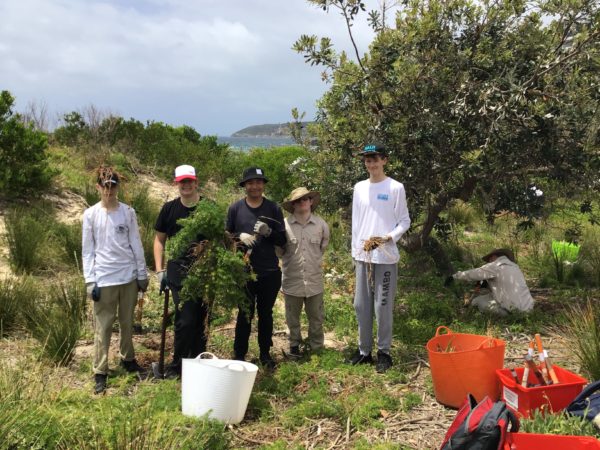
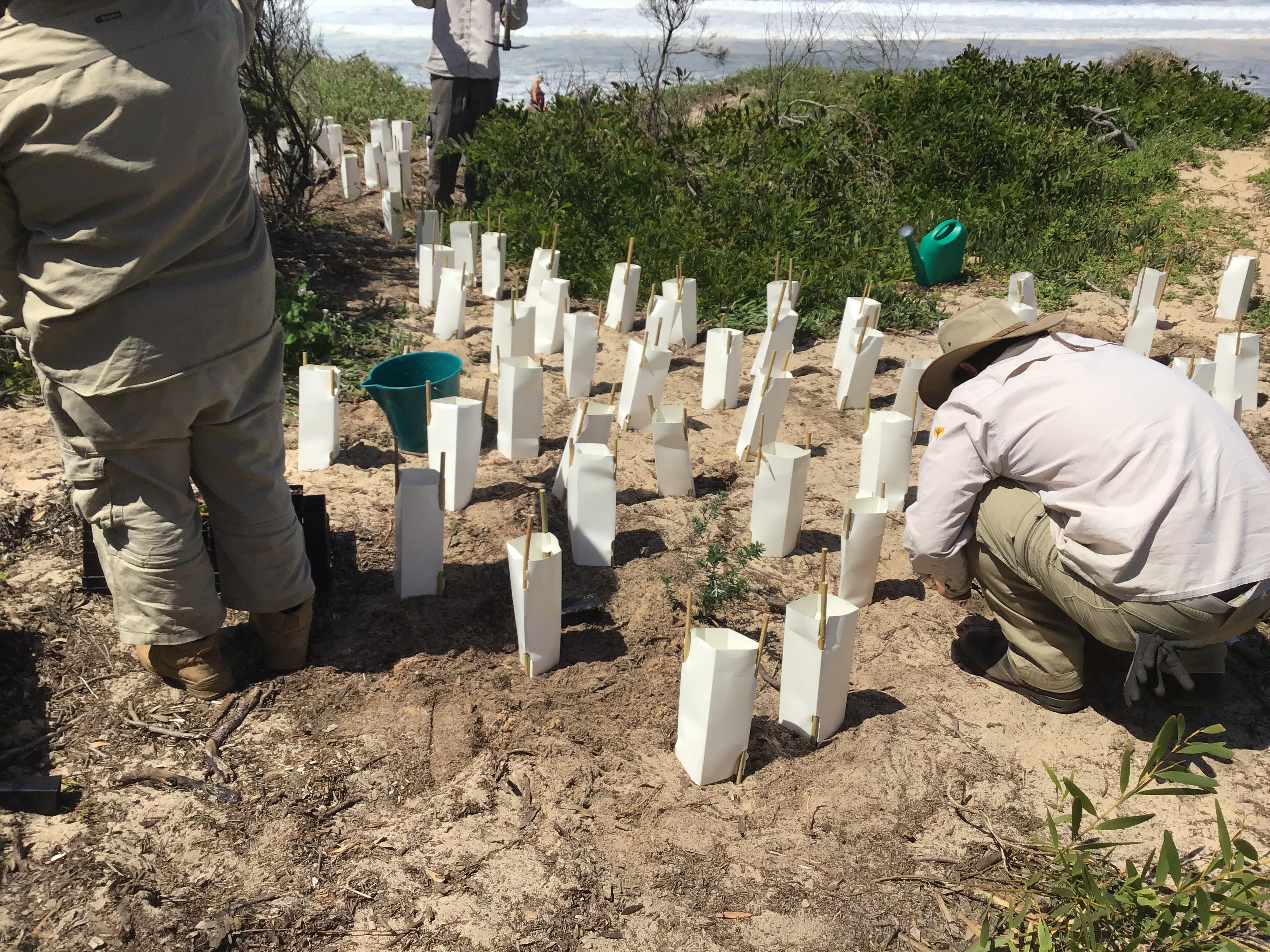
Dee Why Lagoon and Freshwater dunes provides habitat to a range of animals, including local and migratory birds. The Bushlink team have undertaken a project that has improved the overall recovery of the estuarine ecosystems through considered dune management through bush regeneration, revegetation and litter collection.
Assisted by the Friends of Dee Why Lagoon and Undercliff Reserve (Freshwater Dunes) volunteer bush regeneration groups and Northern Beaches Council in dune management, actions included:
- Over 20kg of litter removed, preventing it from making its way into the ocean, and minimising the amount within the dunes which could affect fauna.
- Noxious weed control across 1ha of land, removing primarily Lantana and Asparagus Fern
- Planting of 400 locally native tubestock on the beach side of the dunes to help reduce wind erosion and provide stability
- Increased community awareness and engagement through organised field days with corporate groups, and video and photo sharing of on-site activities.
Friends of Federation Walk, QLD
Project: Federation Walk Restoration and Rehabilitation of Burnt Area
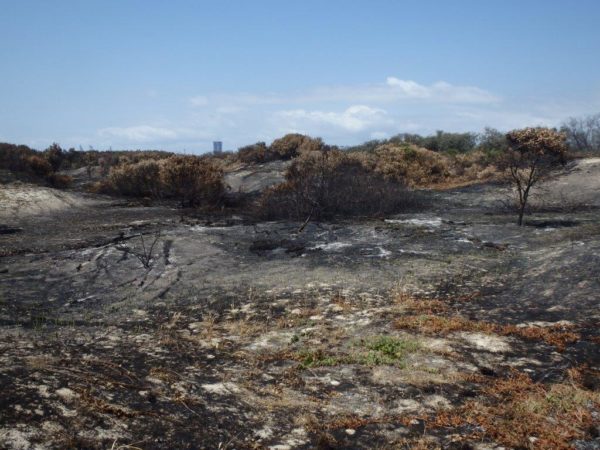
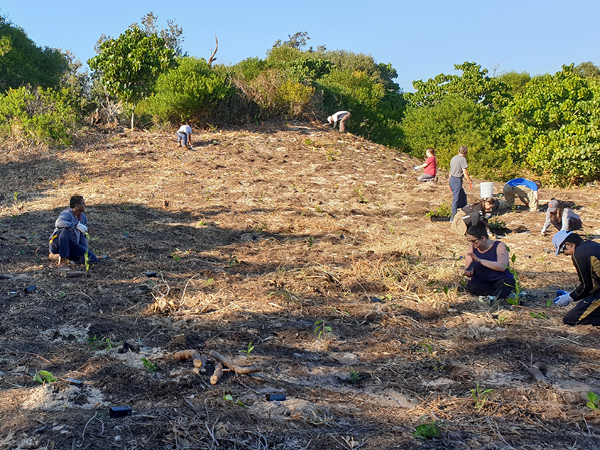
This project undertaken by Friends of Federation Walk has helped contribute to the rehabilitation of a 2,200m² site within the Federation Walk Coastal Reserve that was severely damaged by fire in November 2015.
An intact dune system on the Southport Spit that supports coastal forest, woodland, grassland and wetland vegetation communities, the reserve forms a coastal corridor between the Gold Coast mainland and South Stradbroke Island, and provides vital habitat for a variety of terrestrial and marine species.
Through this project, Friends of Federation Walk have:
- Planted 4840 plants and increased the distribution and diversity of littoral rainforest plants on site. The plant survival rate is over 80%, which is an excellent outcome given the dry weather conditions
- Held a beach clean-up activity that removed over 1500 pieces of rubbish from the coastal environment. During three community-working bees, 180 volunteers contributed almost 500 hours to this project
Friends of Bass Strait Islands, Roydon Island, TAS
Project: Roydon Island– Restoring the land to nurture the threatened
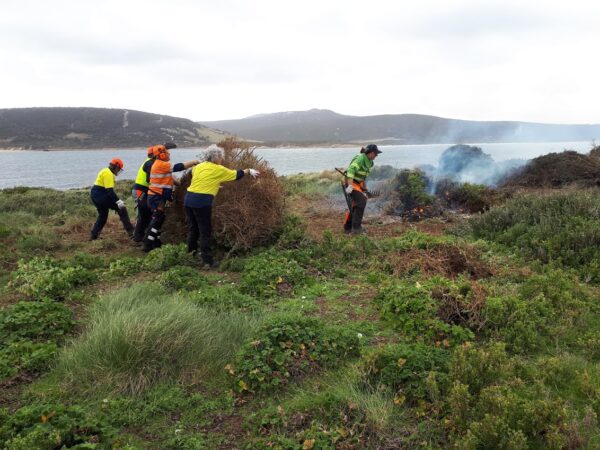
African boxthorn is an extremely invasive ‘declared weed’ and in the Furneaux Islands easily becomes dominant in coastal vegetation, obliterating native habitats and wildlife. Since 2009, over 85 per cent of the island has been cleared of boxthorn by FOBSI, and there has been rapid native vegetation recovery on treated areas. The former boxthorn scrubland is now considered seabird rookery complex – an important breeding habitat for migratory seabird species.
Funding enabled the group to purchase new PPE (personal protective equipment), purchase new tools, and provide volunteers with training, as well as contributing towards to cost of accessing the Island.
Two 12-day working bees saw 30 volunteers contribute 2500 hours of work undertaking primary removal and follow-up control of boxthorn. Additionally, a marine debris clean-up of the island was completed, and all moveable debris were removed to Flinders Island with some displayed at the local school as part of a talk on the extent and impact of marine debris.
Friends of North Ocean Reef-Iluka Foreshore (FONORIF) – Iluka, WA
Project: Rehabilitation of Eroded Coast Line at Iluka
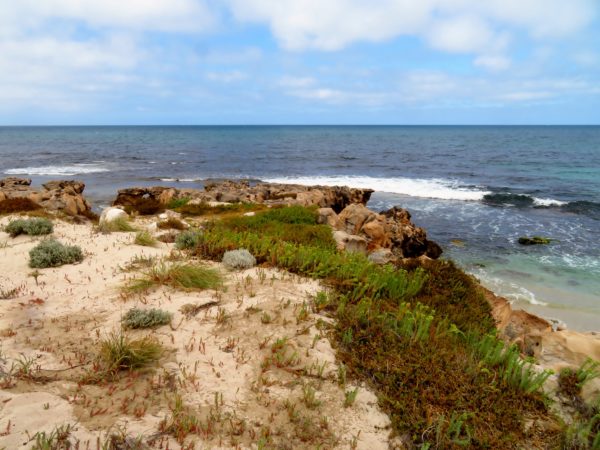
This project has enabled the Friends of North Ocean Reef-Iluka Foreshore (FONORIF) to improve the coastline at Iluka through the rehabilitation of the dunes by removal of weed species and revegetation with endemic species to prevent further erosion, and to increase the cover of habitat suitable for local fauna.
34 volunteers assisted in removing two invasive coastal weed species from the foreshore and adjacent area. The volunteers then planted close to 100 seedlings species indigenous to the area.
A total of 58kg of rubbish was collected from the cliffs, dunes and the beach, preventing a lot of plastic from being ingested by birds and marine life.
Goolwa to Wellington Local Action Planning Association Inc (GLWAP) – Goolwa, SA
Project: Reducing Marine Debris with the Coorong Community
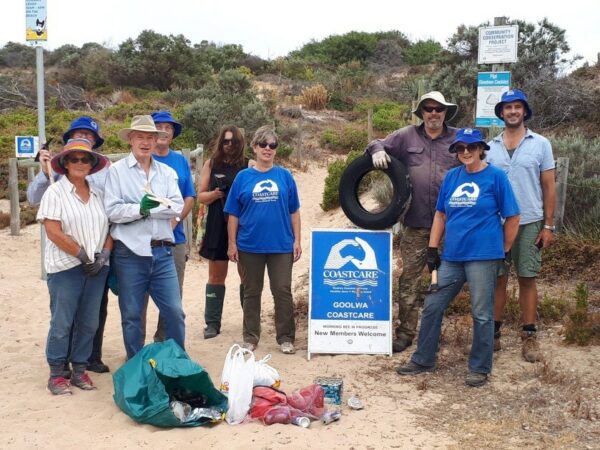
This project has built on the Goolwa to Wellington Local Action Planning Association (GLWAP) highly successful 2018 project by engaging with the community along the Coorong Coastline, to take action for a cleaner coastal and marine environment.
GWLAP hosted five individual schools marine debris beach walks where students collected more than 68kg of marine debris.
GLWAP also facilitated a further 8 working bees with the Goolwa Coastcare Group. More than 106kg of rubbish was collected from the beach and dune areas, in addition to Bushcare weeding to improve vegetation condition and health over 70ha of the regionally significant Goolwa Dunes and Tokuremoar Reserve conservation area, with Ngarrindjeri traditional owners attending the final project activity.
Bulimba Creek Catchment Coordinating Committee (B4C) – Carindale, QLD
Project: Doboy Wetlands & Aquarium Passage Recovery

Since 2000, Bulimba Creek Catchment Coordinating Committee (B4C) has worked downstream from Doboy Wetlands site, undertaking extensive rubbish removal, weed control and replanting, which has seen the formerly degraded site recover to become an important nursery for fish and prawn species, saltmarsh meadow and mangrove riparian area.
The Doboy Wetlands included both weed control and rubbish removal to maximise the recovery of the estuarine ecosystem, as well as awareness raising in the community to help reduce and prevent marine litter through increased understanding of the natural values.
The group held two major community clean-up debris days to remove the marine debris from the wetlands, and the litter and illegal dumping from surrounding areas. Over these two working bees, the volunteers and contractors removed 6.3m³ of litter, over 100kg, made up of plastic bottles, plastic bags, fishing equipment, shoes, tyres, fridges and furniture.
Bellarine Catchment Network – Portarlington, VIC
Project: Bay Friendly Events

This project supported the Bellarine Catchment Network to host two ‘Bay Friendly Events’ at the National Celtic Festival and Queenscliff Music Festival. The aim was to develop a waste management strategy by:
- Encouraging vendors to use compostable crockery and cutlery; reusable cups and no single use plastics
- Motivate people to correctly sort and dispose of their waste
- Implement large-scale community engagement to increase coastal clean-up action and reduce event litter and waste management in the region
A litter collection audit was undertaken at the 4 day Celtic Festival – previous events hosted at this location have resulted in huge negative environmental impacts from waste blowing into the bay and being dumped on foreshore and beach areas adjacent, ending up as marine litter.
Clean up audits after the National Celtic Festival have continued to show a decrease in litter in the coastal area adjacent due to the raised awareness and community action post this event.
Hindmarsh Island Landcare Group Inc – Hindmarsh Island, SA
Project: Really Caring for the Murray Mouth Icon Site

A Ramsar wetland of international importance, the project site is a complex system comprising tidal, saltmarsh and sand dunes. Additionally, work was undertaken at key biodiversity sites adjacent to these areas, including the Murray Mouth lookout, Bird Island, Mundoo Paddock & Grey Paddock.
Integrated with ongoing environmental restoration work undertaking by Hindmarsh Island Landcare Group, the project sought to increase capacity for seed collection, propagation and revegetation of coastal dunes and removal of litter from planting sites in the project area.
Positive outcomes included:
- 2500 local native plants propagated and planted to enhance biodiversity, reduce erosion and provide habitat
- Over 2 tonnes of plastic plant guards and canes collected, in addition to a significant amount of everyday rubbish, eliminating the potential of plastic waste ending up in the ocean or on the roadside.



